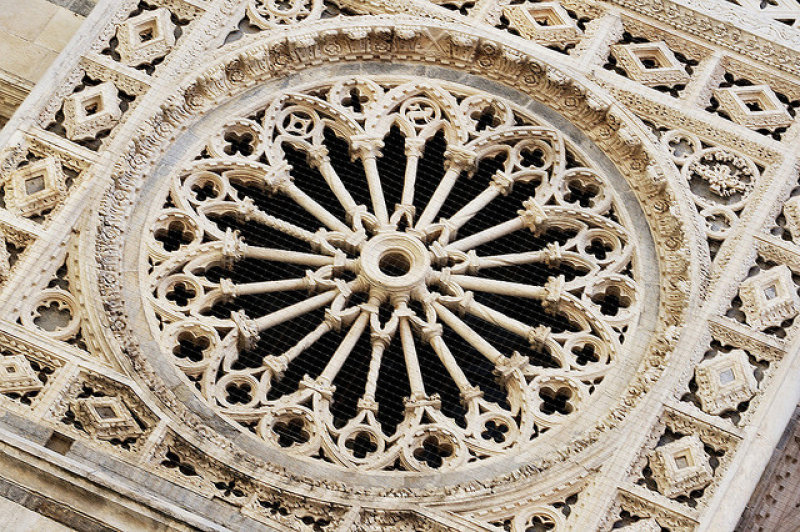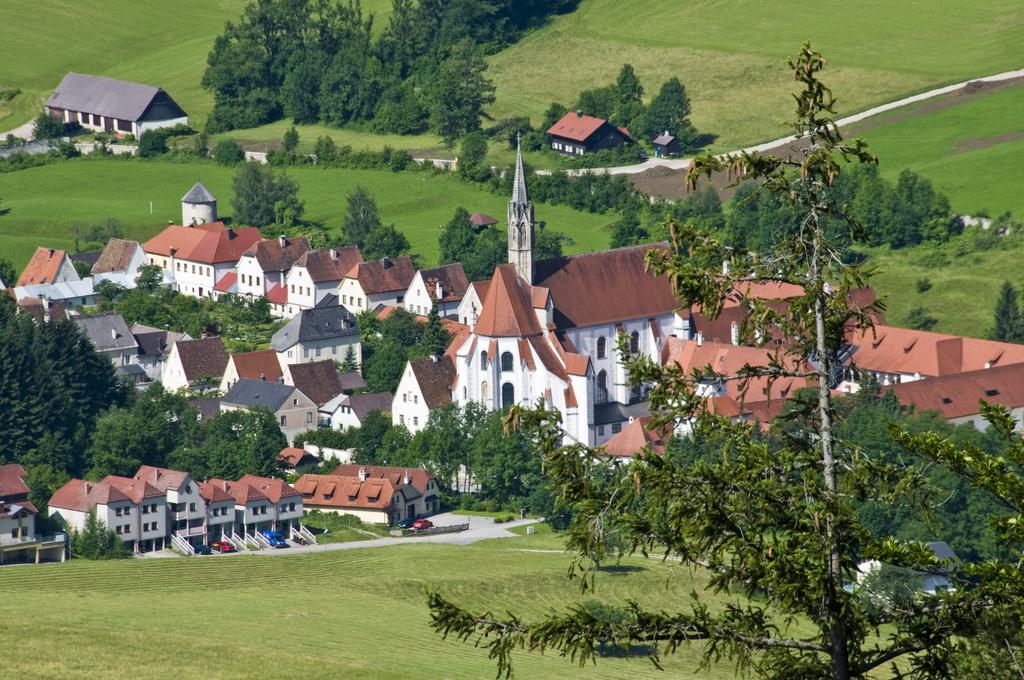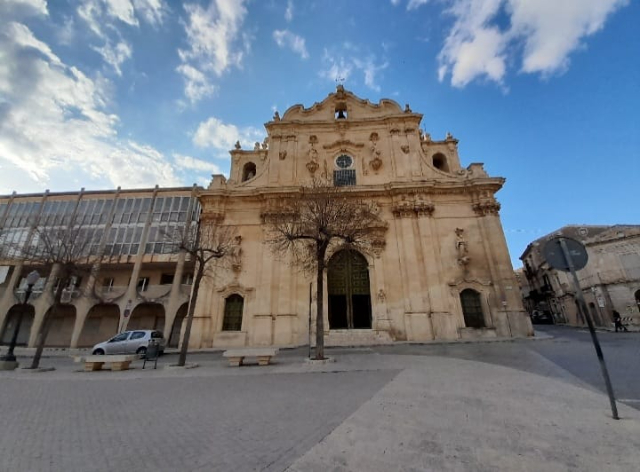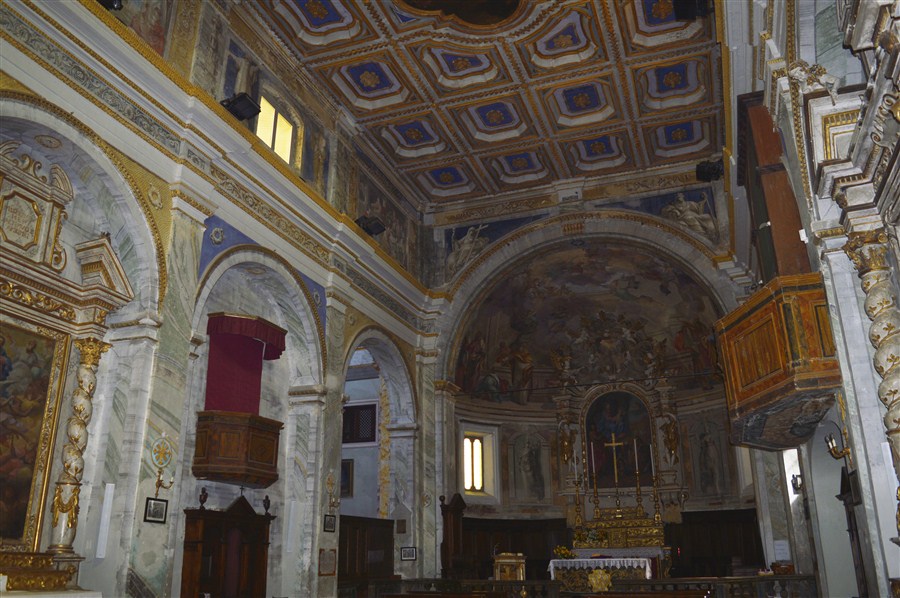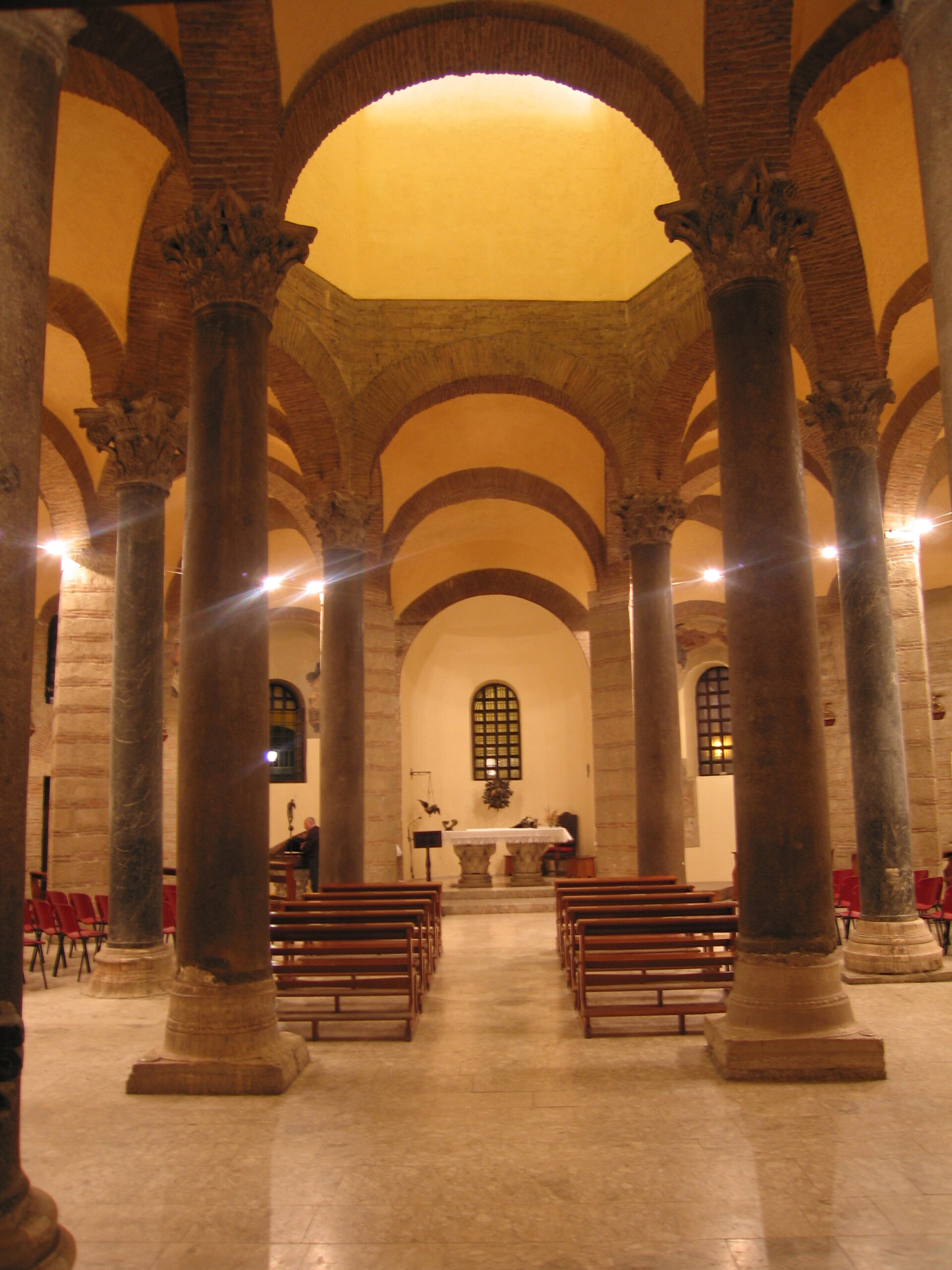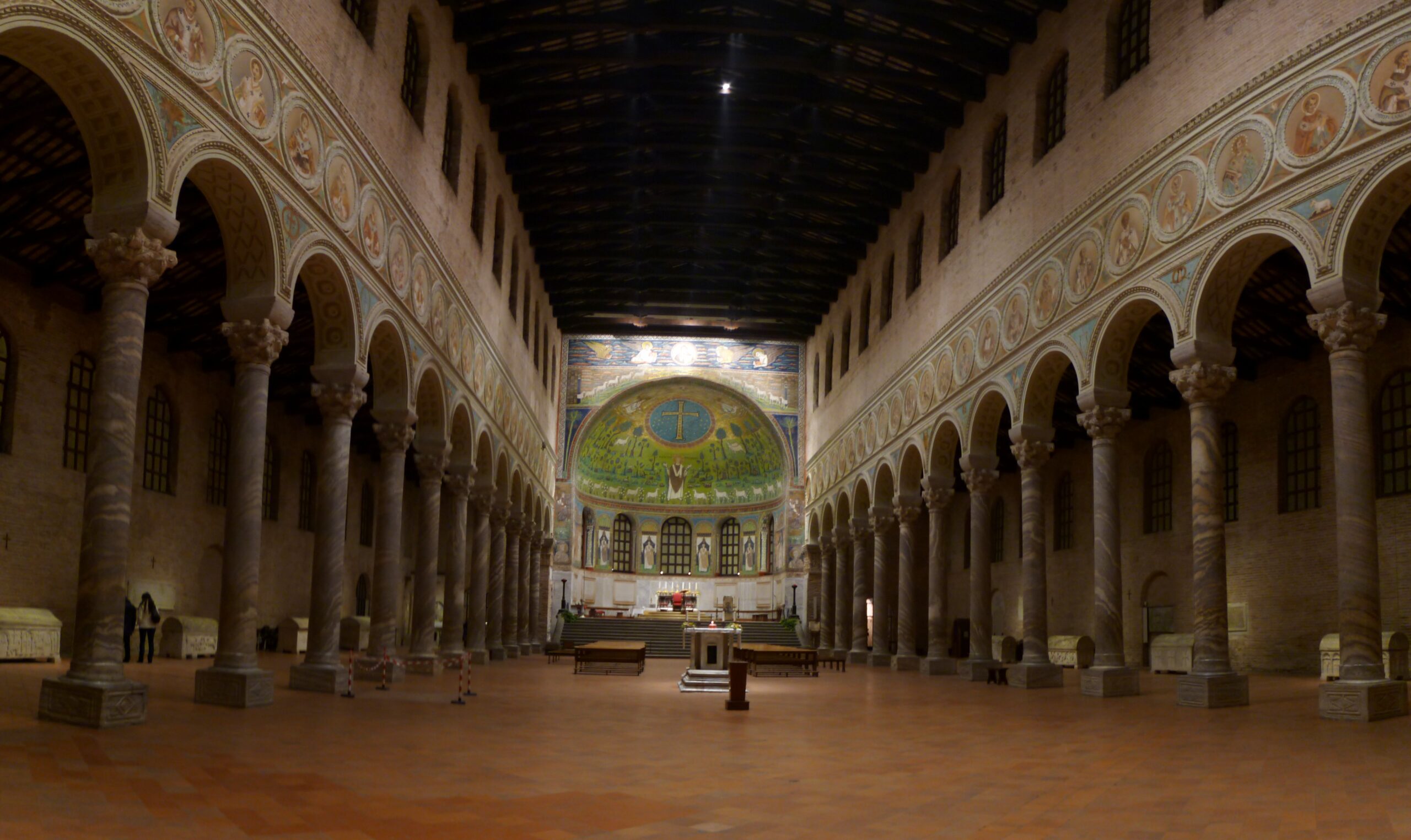The first document concerning the parish church of Sant’Andrea dates back to 1035. The building was completed as we see it today in 1395, with the addition of the marble bichromatic facade and the bell tower. The church has three naves, the central one with a trussed ceiling and the lateral ones with cross vaults and a semicircular apse.
The church was built in different periods, as evidenced by its architecture. Of the original eleventh-century structure, only a few decorative elements of the facade remain today. A second phase of the mid-twelfth century is indicated by the colonnade, the sculptures, the leaves and the animals typical of the medieval bestiary. The third and last phase dates back to the construction of the central rose window and the loggia.
In the portal of the facade the sculptural decorations stand out while the lateral portal or of San Giovanni, coeval to the previous one, is a beautiful example of Lombard Romanesque art of the 12th century. The bell tower is strtutturato on five floors distinguished by ogival windows, marked by marble columns, initially single lancet windows and then mullioned windows with two, three and four lights.
Inside, the church has valuable works of art such as the six minor altars, including one dedicated to St. Ceccardo, patron saint of Carrara, with Renaissance and Baroque influences, the group of the main altar of the fifteenth century, the Florentine sculptor Andrea De Guardi, the pulpit in polychrome marble of the sixteenth century and the two fourteenth-century statues depicting the Annunciation, called "the Cassanelle" and attributed to Giovanni Pisano.
